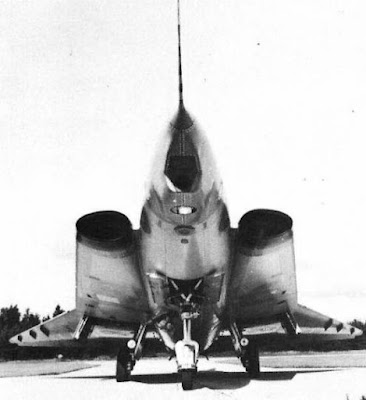The Saab J35 Draken was a supersonic fighter and interceptor aircraft, which was in service with the Swedish Air Force from 1960 to 1999. It was the first double-delta wing aircraft ever to fly in the world, as it represented the Scandinavian country's boldness, independence, and unique innovation in design. It would become the keystone of Sweden air defense system during the Cold War period. A total of 651 J35 warplanes were manufactured in several versions as it was exported to Denmark, Finland, and Austria.
The prototype of the Draken, the Saab 210, first took to the air on October 25, 1955. It was flown by the company's test pilot Bengt R. Olov, taking off from Tannefors airfield. After five years of flight tests, it was finally introduced on March 8, 1960, as the J35A, which was the first version of this combat aircraft. This was powered by one Svenska Flygmotor RB6B, which was a license-built Rolls Royce Avon 200-series turbojet engine. The other variants were the J35B, J35C, J35D, J35E, J35F, J35J, S35E, TJ35, etc. The J35D had an upgraded power plant, which was based on the Rolls Royce Avon 300, capable of generating 17,700 pounds of thrust. The S35E was the reconnaissance version, while the TJ35, the trainer variant.
Technical Description
The Saab J35 Draken was a single-seat, single-engine, supersonic monoplane. The fuselage was all-metal, and it was designed integral with the center wing section. It was built as a light metal, stressed skin structure. The fuselage front section housed the radar and the nose landing gear, while the rear section accommodated the engine, with afterburner, fuel tanks, and the main landing gear. Underneath the rear fuselage portion, there were attachment points for external armament racks or drop tank. The fuselage had a dorsal spine on top, running from the canopy rearwards past the fin. The vertical fin, or vertical plane stabilizer, was the only part of the tail assembly as it lacked a horizontal stabilizer.
The wing of the Draken was of the cantilever, mid-wing type, in double delta configuration. The wing leading edge sweepback angle was 80 degrees on the inboard section, and 57 degrees on the outboard portion. All moving surfaces, such as wing ailerons and fin rudder, were servo-powered by two actuators per surface. The landing gear was retractable, with the front wheel folding up forwardly into fuselage, and the two main wheels retracting outwardly into wings. The engine air intakes were located on the sides of fuselage and in the root of wing. Oval-shaped, they consisted of a magnesium annular casing, with hydraulically-actuated variable incidence inlet guide vanes.
Specifications (J35J)
Type: single-seat fighter/interceptor
Length: 15.35 m (50 ft, 4 in)
Wing Span: 9.40 m (30 ft, 10 in)
Wing Area: 49.20 m2 (530 sq. ft)
Height: 3.89 m (12 ft, 9 in)
Power Plant: one 17,700-lb, Volvo Flygmotor RM6C (Rolls Royce RB.146 Avon 300) turbojet engine.
Maximum Speed: Mach 2 (2,125 km/h, or 1,320 mph)
Range: 1,930 km (1,200 miles)
Avionics: Ericsson PS01/A search and ranging radar with horizon-stabilized scan program; the Red Baron night reconnaissance pod, with three synchronized 70-mm Vinten cameras with infrared-corrected lenses.
Armament: one 30-mm Aden M-55 cannon; two RB-27 radar homing air-to-air missiles and two RB-28 infrared homing air-to-air missiles; or four AIM-9 Sidewinder air-to-air missiles.
Below, the J35D version in flight, exposing its underside as it banks left. It is armed with four air-to-air missiles.
The J35F variant, painted in red, flying over the Gulf of Bothnia in 1970.
Below, the prototype Saab 210 in flight.
Front view of the S35E, the reconnaissance variant, parked at a military base.






